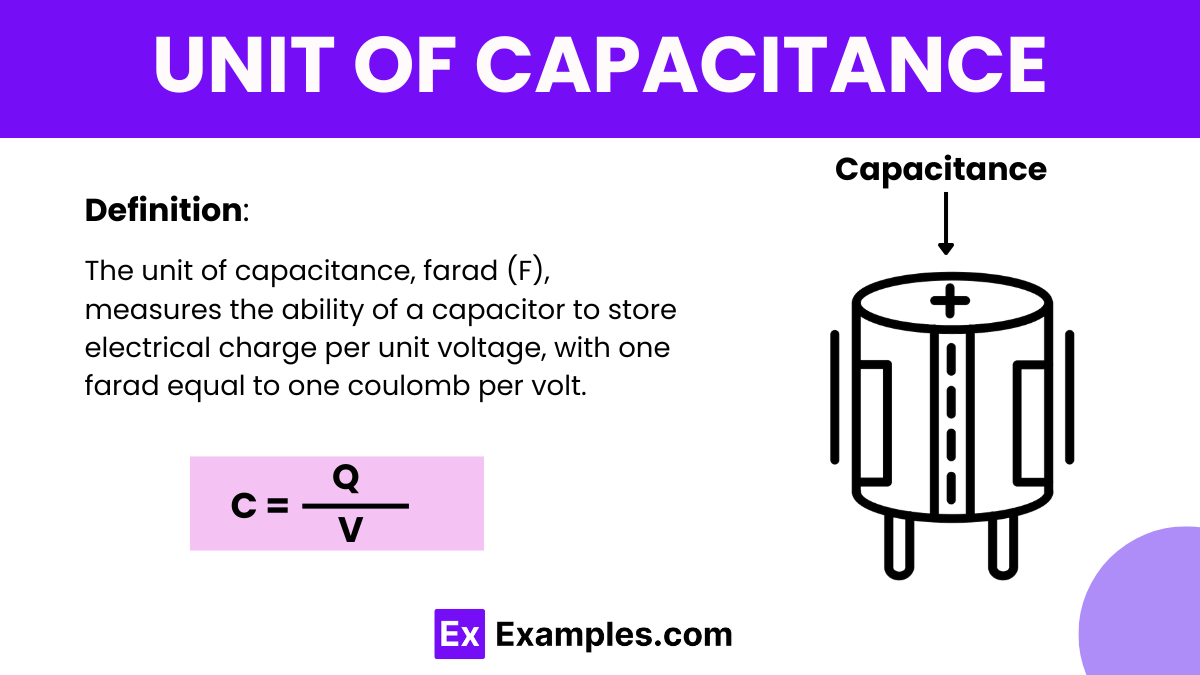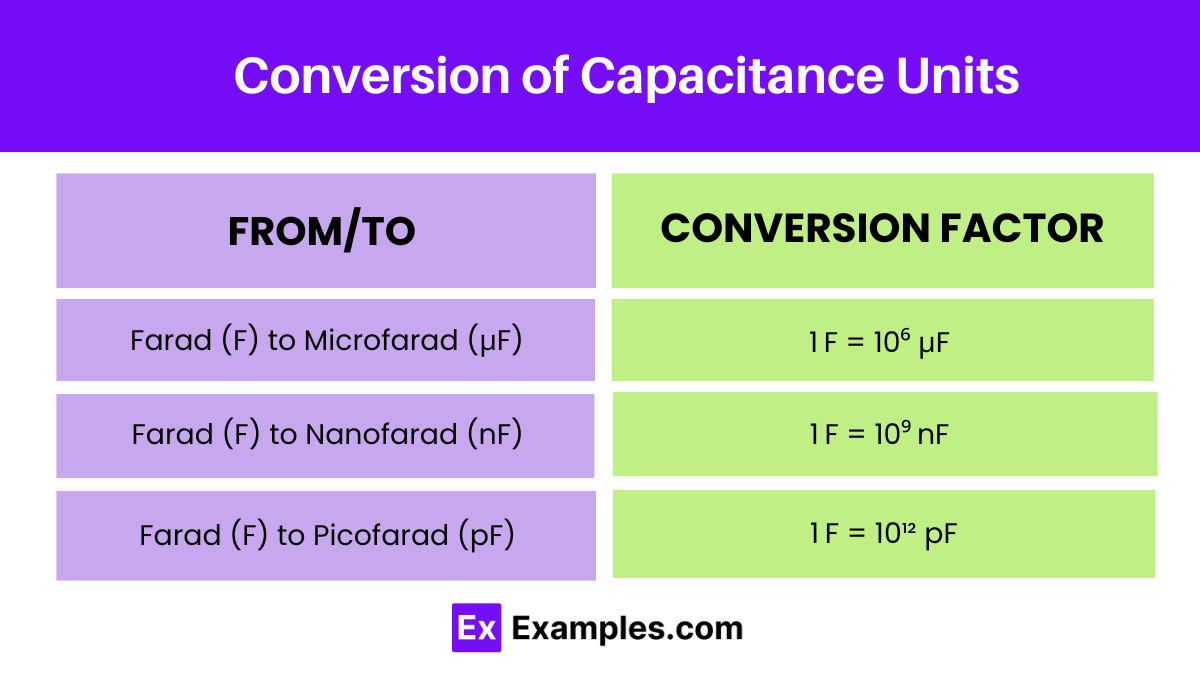What is the SI unit of capacitance?
Coulomb
Farad
Henry
Ohm


The unit of capacitance is a vital concept in physics, defining the ability of a system to store electrical charge per unit voltage. Capacitance is measured in Farads (F), named after the physicist Michael Faraday. It represents the ratio of stored charge to the applied voltage across a capacitor. Understanding capacitance is fundamental in explaining electrical phenomena like energy storage, filtering, and signal processing in electronic circuits. Capacitors, the devices used to store electrical energy, rely on capacitance measurements to determine their performance characteristics, making capacitance a cornerstone in the field of physics and electrical engineering.
Where:
In the SI system, capacitance is measured in Farads (F). One Farad represents the capacitance of a system when one coulomb of electrical charge is stored per volt of potential difference (voltage) across a capacitor. In simpler terms, it quantifies the ability of a capacitor to store electrical charge relative to the voltage applied to it. Capacitance is a crucial concept in electronics and electrical engineering, influencing the behavior and performance of capacitors in various circuits and systems.
In the CGS system, capacitance is measured in statfarads (statF). One statfarad represents the capacitance of a system when one statcoulomb of electrical charge is stored per statvolt of potential difference (voltage) across a capacitor. The statfarad is a unit of charge storage capacity relative to voltage, similar to the Farad in the SI system but with different charge and voltage units. While the Farad is more commonly used in modern electrical engineering, the statfarad is still encountered in certain contexts within the CGS system.
| Unit | Symbol | Equivalent |
|---|---|---|
| Microfarad (μF) | μF | 10⁻⁶ F |
| Nanofarad (nF) | nF | 10⁻⁹ F |
| Picofarad (pF) | pF | 10⁻¹² F |
| Kilofarad (kF) | kF | 10³ F |
| Megafarad (MF) | MF | 10⁶ F |
| Gigafarad (GF) | GF | 10⁹ F |

| Conversion | Conversion Factor | Example |
|---|---|---|
| Farad (F) to Microfarad (μF) | 1 F = 10⁶ μF | 10 F = 10×10⁶ μF |
| Farad (F) to Nanofarad (nF) | 1 F = 10⁹ nF | 10 F = 10×10⁹ nF |
| Farad (F) to Picofarad (pF) | 1 F = 10¹² pF | 10 F =10×10¹² pF |
Capacitance units are commonly used in electronic circuits for filtering, tuning, energy storage, and timing applications. They are also used in power factor correction, sensor technology.
Smaller units are used to represent capacitance values in electronic circuits where the capacitance values tend to be relatively small. These units make it easier to express and work with capacitance values in practical applications.
Larger units of capacitance are used in specialized applications such as energy storage systems, power distribution networks, and high-energy physics experiments where large amounts of charge need to be stored or managed.
Text prompt
Add Tone
10 Examples of Public speaking
20 Examples of Gas lighting
What is the SI unit of capacitance?
Coulomb
Farad
Henry
Ohm
Which unit is equivalent to one Farad?
Coulomb/Volt
Volt/Coulomb
Henry/Volt
Volt/Ampere
How is capacitance measured in microfarads (μF) related to Farads?
1 μF = 10⁶ F
1 μF = 10⁻⁶ F
1 μF = 10³ F
1 μF = 10⁻³ F
What is the unit for capacitance used when dealing with very small capacitances?
Millifarad (mF)
Nanofarad (nF)
Kilofarad (kF)
Megafarad (MF)
Which prefix represents 10⁻⁹ Farads?
Pico-
Milli-
Nano-
Micro-
What is the relationship between picofarads (pF) and Farads?
1 pF = 10⁶ F
1 pF = 10⁻⁶ F
1 pF = 10⁹ F
1 pF = 10⁻¹² F
What is the unit of capacitance in the CGS (centimeter-gram-second) system?
Statfarad
Abfarad
Coulomb
Volt
If a capacitor has a capacitance of 100 nF, what is this value in Farads?
10⁻⁷ F
10⁻⁹ F
10⁻⁸ F
10⁻¹¹ F
Which unit is larger, 1 μF or 1000 nF?
1 μF
1000 nF
They are equal
Cannot be determined
What unit of capacitance would be most appropriate for describing a small capacitor in an integrated circuit?
Farad
Millifarad
Nanofarad
Picofarad
Before you leave, take our quick quiz to enhance your learning!

